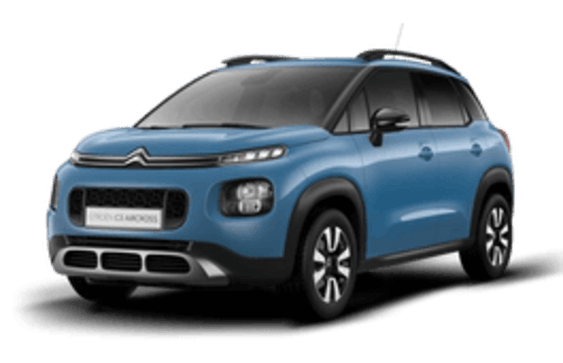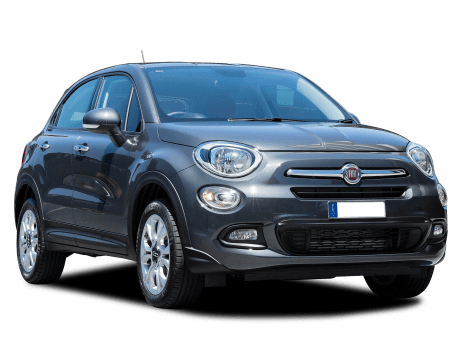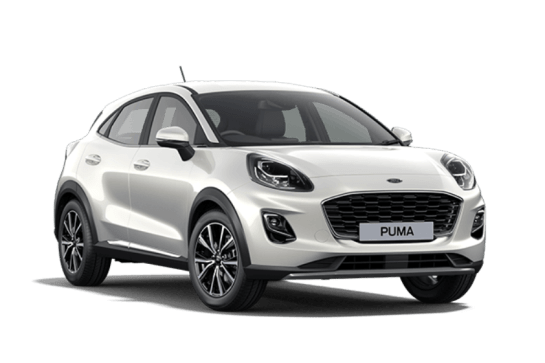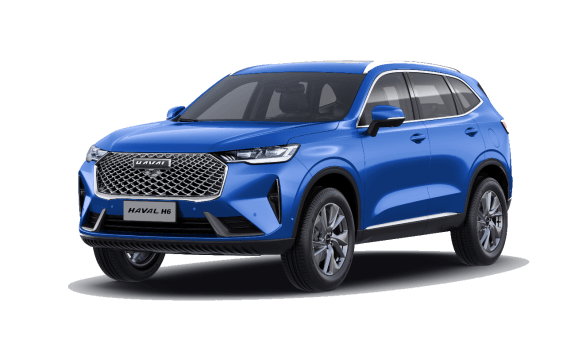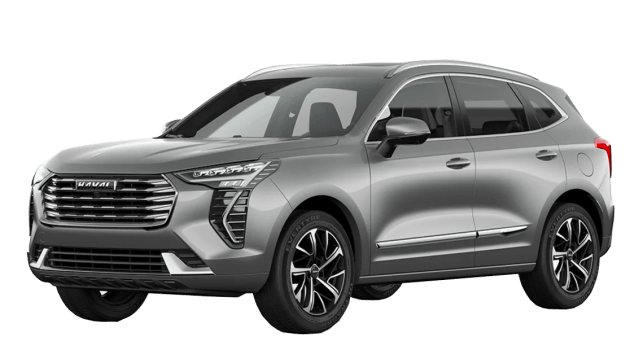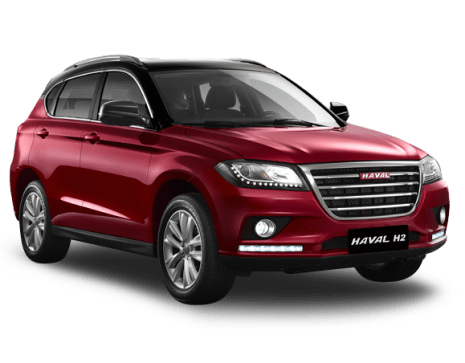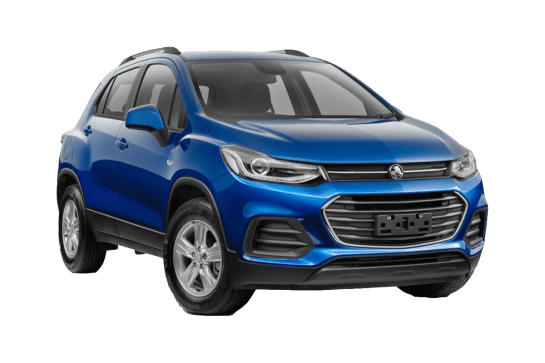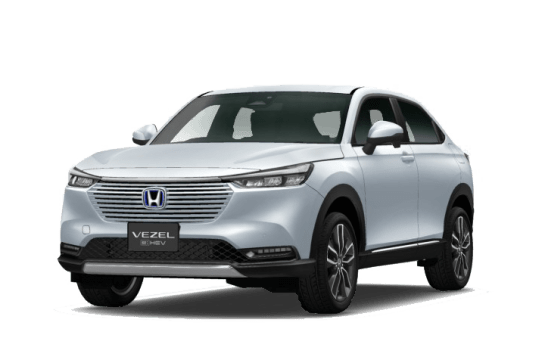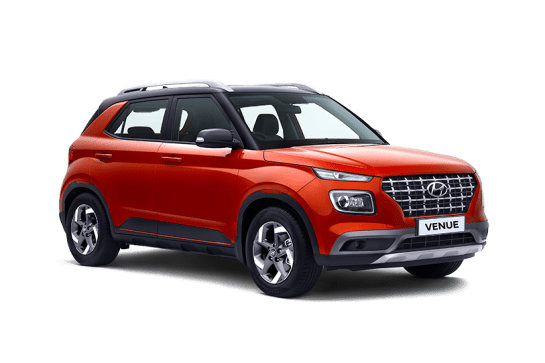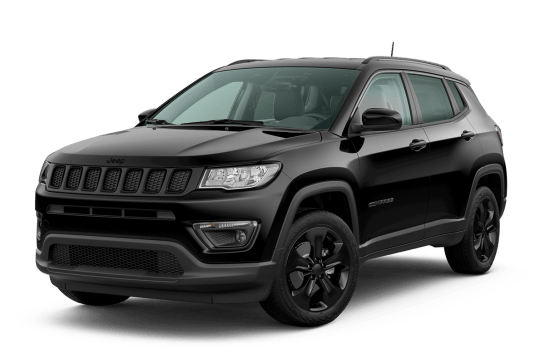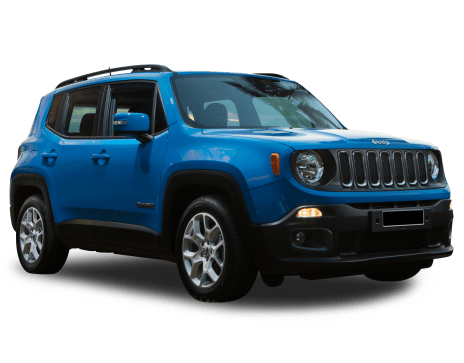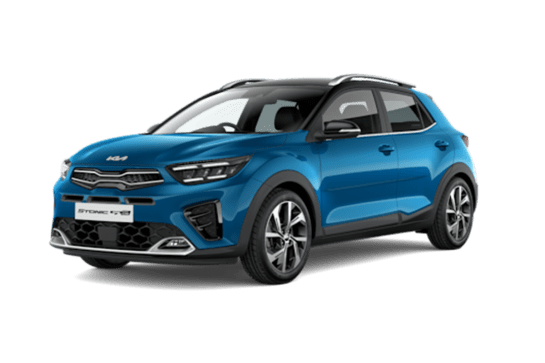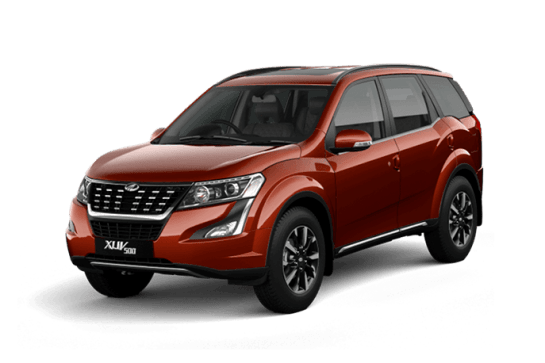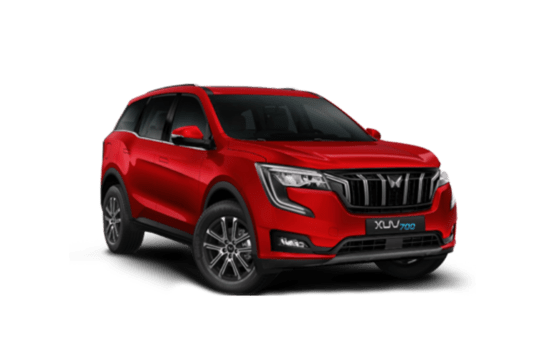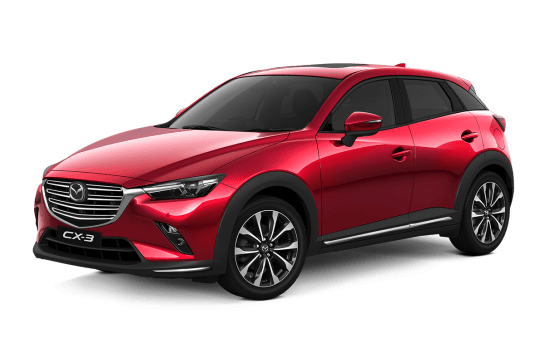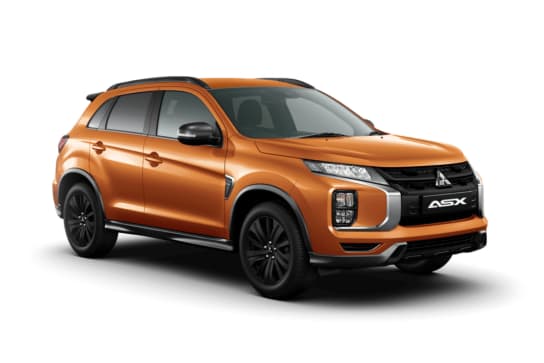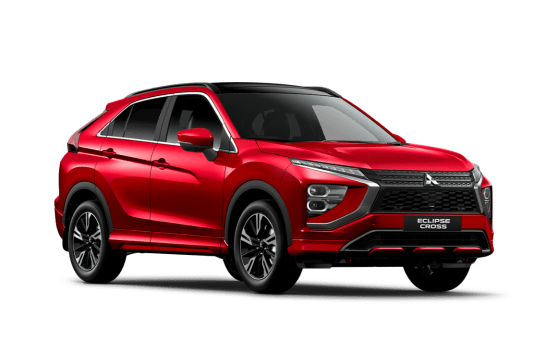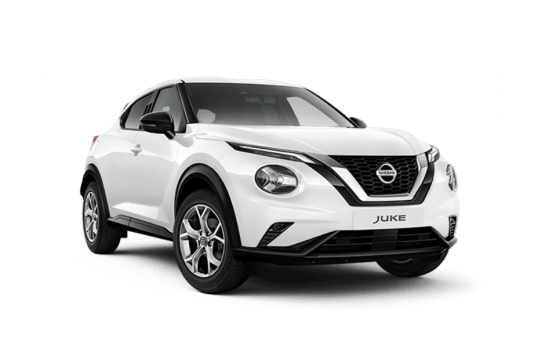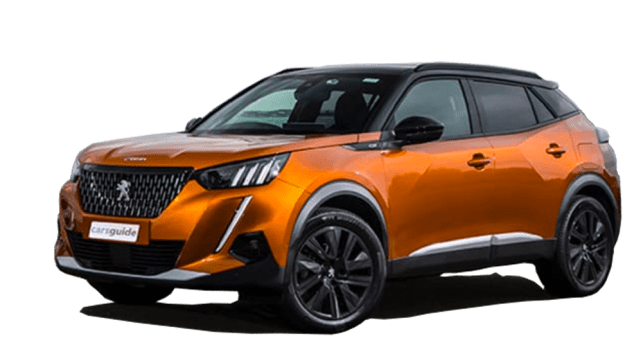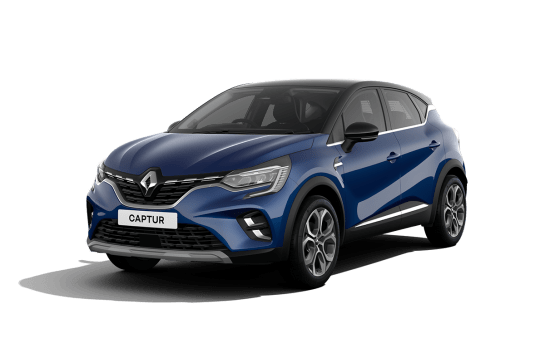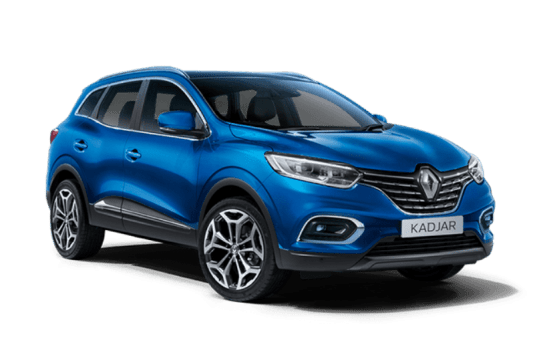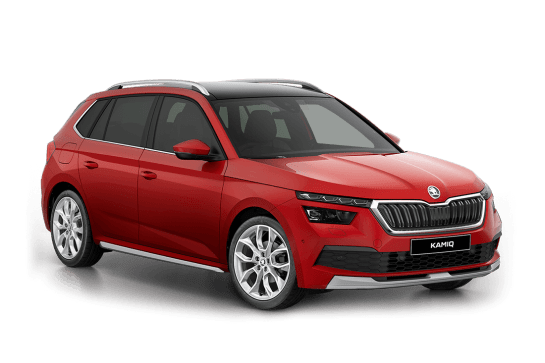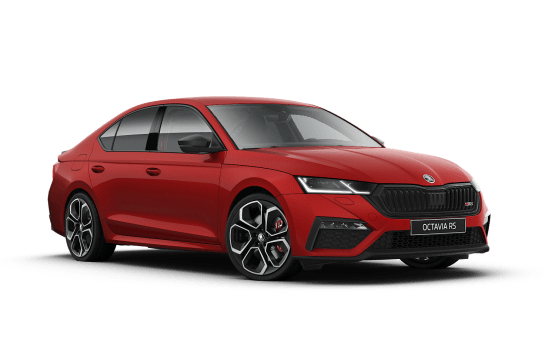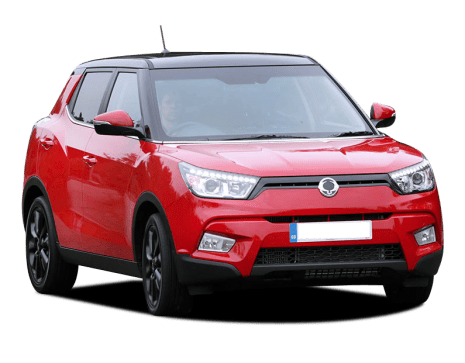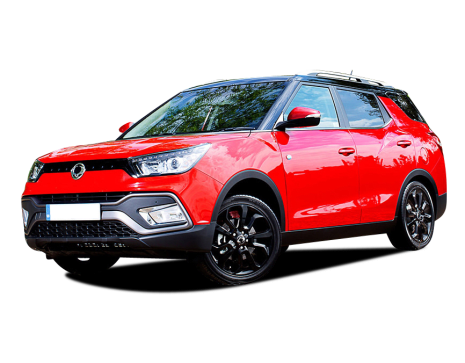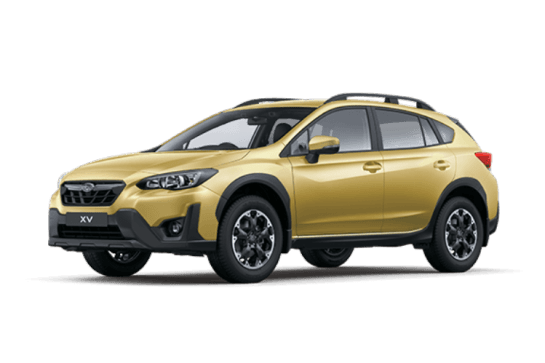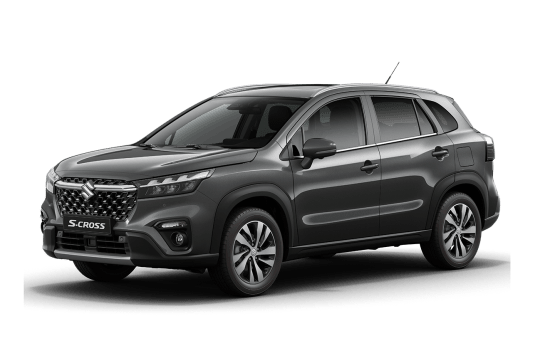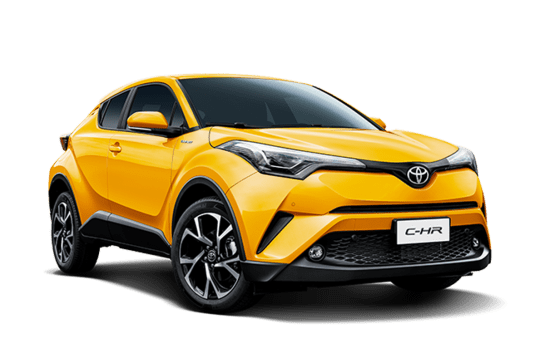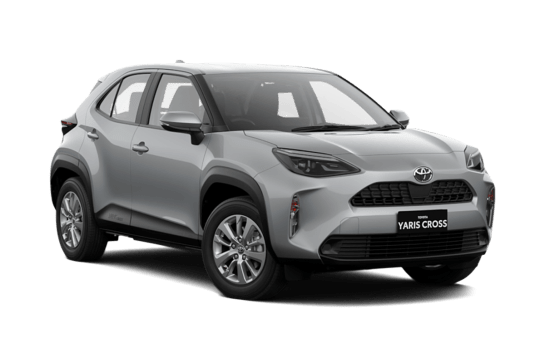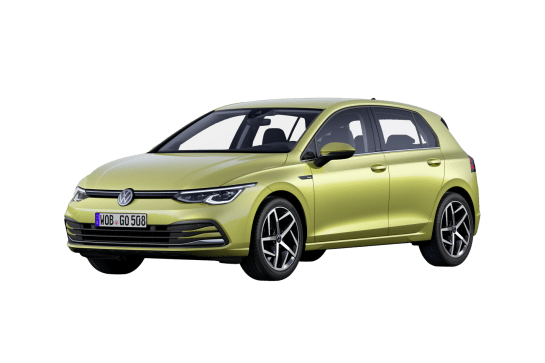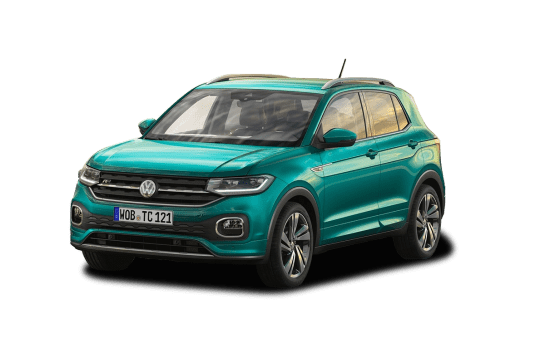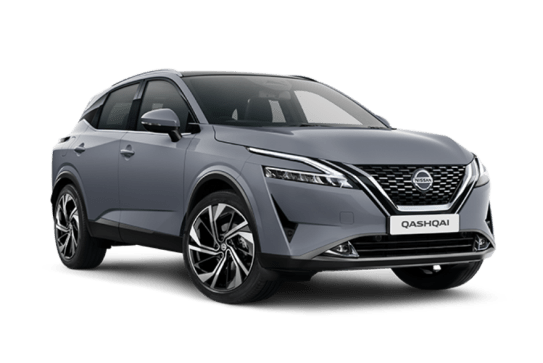
Nissan Qashqai VS Honda HR-V
Nissan Qashqai
Likes
- Attractive design inside and out
- Strong yet frugal performance
- Quality presentation
Dislikes
- e-Power limited to costly Ti grade only
- Requires 95 RON premium unleaded
- No spare wheel – boo!
Honda HR-V
Likes
- Seriously good-looking inside and out
- Affordable price tag for grade level
- Easy to drive in the city
Dislikes
- Missing features you'd expect for top model
- Safety could and should be better
- Engine gets whiny on open roads
Summary
Nissan Qashqai
Everybody loves an underdog story and Nissan’s one is a beauty.
For decades, the model we knew as the Pulsar struggled to crack the European small car market against the likes of the Ford Focus and the company was in serious strife. Worthy but derivative, it struggled to stand out.
So, for its 2007 replacement, some bright sparks convinced Nissan to reimagine the hatch by butching it up, raising the ride height and changing the name to something exotically daft. And, voila, the original Qashqai was born.
Read more about
- Comeback kings: How Nissan turned around its sales slump with new X-Trail, Qashqai and Pathfinder SUVs
- Nissan to take on Tesla? Three UK-built electric cars to join upcoming Nissan Ariya SUV as brand bets big on EVs
- How many people are really buying hybrids? We break down the Nissan X-Trail to see how many buyers opted for the Toyota RAV4-rivalling e-Power hybrid car version | Analysis
Initially sold in Australia as the Dualis, it quickly became a global smash hit, finally catapulting the brand from follower to leader, creating the small SUV segment as we know it today.
If you love your Hyundai Kona, Mazda CX-30, Toyota C-HR or VW T-Roc you have Nissan’s ingenuity to thank.
Now it’s at it again with the Qashqai e-Power – an EV-first hybrid using a petrol engine to only charge its battery so an electric motor can drive the front wheels. More than a Prius, less than a Tesla, then.
The next big thing or a dead end? Let’s find out.
| Safety rating | |
|---|---|
| Engine Type | 1.5L turbo |
| Fuel Type | Electric/pulp |
| Fuel Efficiency | 5.2L/100km |
| Seating | 5 seats |
Honda HR-V
Like many car brands, Honda is storming the hybrid field. The new HR-V brings with it a hybrid powertrain and external facelift but is it enough to keep it competitive in the small SUV segment?
As with any cosmetic surgery you may wonder whether the facelift has been successful.
No tricks – I’ll tell you straight up the new external design might be what you’re looking for if you’re on the hunt for a small SUV that doesn’t look like it moonlights as an Uber for Mr Big Ears (a Noddy reference for any youngsters out there).
Read more about
- Eye-popping new Japanese sports car spotted: Upcoming Honda Prelude sports car will look like its sleek concept as hybrid Hyundai i30 sedan N rival spotted testing in Germany: Report
- Honda CR-V 2025 review: e:HEV RS long-term | Part 1
- Popular family cars hit with four star safety rating: 2025 Honda CR-V and Honda ZR-V called out by ANCAP in a blow for the Toyota RAV4 Hybrid and Corolla Cross Hybrid rivals
We're testing out the top hybrid model, the L, to see what else this urban dweller gets right and what it sometimes gets wrong.
| Safety rating | |
|---|---|
| Engine Type | 1.5L |
| Fuel Type | — |
| Fuel Efficiency | 4.3L/100km |
| Seating | 4 seats |
Verdict
Nissan Qashqai8.3/10
So, should you give up on the Qashqai e-Power, or surrender to its many and varied charms? Well, when the Japanese brand really tries, as it clearly has here, Nissan can be as imaginative and as innovative as any carmaker on the planet.
And given the latest Qashqai out of Europe is so advanced and unique within its SUV category, this deserves to be on everybody’s shortlist. With e-Power under that pretty bonnet, this Ti is a leader, not a follower. This underdog could win best-in-show!
Note: CarsGuide attended this event as a guest of the manufacturer with accommodation and meals provided.
Honda HR-V7.8/10
The Honda HR-V e:HEV L offers a respectable driving experience in the city but compared to its rivals, it’s features list and safety don’t always stack up. It sort of straddles the fence between basic and lux at times, which is an odd place for a top-model to be but its sharper styling will win hearts and the cabin is still practical.
Design
Nissan Qashqai
There’s nothing radical or ground-breaking about the third-gen version’s styling, other than it’s pretty and unmistakably a Qashqai. Even from tens of metres away. That’s a hallmark of good design.
But, like an Oscar’s worthy red-carpet outfit, the familiar lines remain classy on this third imagining, with a particularly strong front-end LED lighting graphics presence against a modern grille treatment, pleasing classical proportions and an elegantly executed posterior.
Unless you’re a train spotter-type or work for Nissan PR, it’s easy to miss the very minor details setting this particular Ti apart. Nissan dubs the extra glossy black lipstick up front as its ‘premium grille’ appearance. There’s a smattering of e-Power badges. And ground clearance drops 5.0mm, to 175mm. That’s it.
As with all current Qashqais, the e-Power offers larger packaging compared to before, as a result of adopting a fresh “global Renault-Nissan-Mitsubishi Alliance platform”. The upshot is a longer, wider and taller small SUV, to the tune of 31, 30 and 29mm, respectively.
And, for the benefit of rear seat occupants, the wheelbase has also been stretched by 19mm.
It’s worth noting that, despite Nissan’s best efforts to keep the kilos down by deploying aluminium for the doors, bonnet and front guards (resulting in a commendable 60kg saving while body stiffness rises by 41 per cent), the e-Power attracts a hefty 200kg penalty over the ICE Ti.
Does this adversely affect efficiency? Please keep reading to find out.
Honda HR-V
The small SUV segment can often be littered with odd-looking cars that highlight pillowy or severely angular body-shapes (lookin' at you C-HR) but the HR-V offers something stylish and modern instead.
The 2025 HR-V has a sharper design that accentuates the coupe styling, slim LED headlights and crisp-looking grille. A feature highlight is the eye-catching full-length tail-light treatment which makes the design pop at the back.
The interior is gorgeous with a streamlined dashboard that features just the right number of buttons and dials for those who want more tactility in a world where screens rule.
While the technology screens are on the smaller end, they look great against the synthetic leather trims and soft touchpoints that are liberally splashed throughout the cabin.
The cockpit is driver-orientated with everything within reach and easy to use while on the go. The steering wheel looks sporty and feels wonderful.
Everything looks well-built and feels solid; it's a cabin you’ll be pleased to spend time in.
Practicality
Nissan Qashqai
Being bigger than before brings benefits.
The Qashqai’s doors open super-wide. Great for entry/egress, winning over SUV sceptics and inflicting damage on adjacent vehicles.
Once sat inside, the people-pleasing presentation continues in this sumptuously-presented Ti grade, with eyes immediately drinking in the pleated leather-faced seat patterns, subtle colour-coded trim, attractive dashboard architecture and the surprising depth of quality in the materials deployed.
As we discovered to our delight, all are further flattered when drenched in the dappled rays of an early autumnal afternoon sun, courtesy of that panoramic hole in the roof.
If you’re expecting the common-sense dullness of some less-ambitious Nissans, a significant mindset reset is required, highlighting the European aspirations of this cosy yet comfy British-built SUV.
In our comparatively brief time in the Qashqai, we also noted the excellent driving position, enveloping support of the fine front seats, user-friendliness of the digital displays (including the head-up dials), clear instrumentation that still manages to convey as much, or as little, data as you need without bamboozling you with info-overload, generous storage and an effective climate-control system.
Plus, that vast sunroof includes a full-sunblock screen – a feature sorely missing in many European and Chinese branded alternatives. Others, take heed.
Our main objection is obstructed over-the-shoulder and rear vision, that’s very obvious when parking in tight spots. Those cameras are essential.
Moving out the back, it’s fairly spacious for most people though knee room remains tight for longer-legged passengers. Most expected amenities are present, such as face-level air vents, USB-A and -C outlets, a centre armrest with cupholders and overhead lighting. And the upmarket ambience carries through, too.
But don’t go expecting any sliding or reclining back-seat versatility, as you might find in some rival SUVs.
Now, here’s an interesting fact. Nissan says there’s no drop in cargo capacity between the e-Power and the regular ICE-powered version of the Qashqai. Indeed, the figure increases, from 418 litres to 452L and, if you lower the back seat, from 1513 to 1518L.
So, how does this magic work? The location of the battery underneath the front seats (rather than under the rear bench) helps, as well as the elimination of the ICE Ti’s 19-inch alloy spare wheel for that infernal tyre-repair kit.
Win some, lose some!
Honda HR-V
For a small SUV, the cabin is large. Both seating rows feature excellent access with the 195mm ground clearance not eliciting one grunt from my occupants (even the oldies).
Head- and legroom is decent in both rows but taller passengers might brush the ceiling on bumps when seated in the back.
The only area that lacks this feeling of space is the boot, as it only has 304L of capacity available when all seats are in use and that's on the tiny side compared to its rivals. The Kia Niro has 425L which rivals some sedans!
Seat comfort is best in the front where thick padding and a longer cushion offer more comfort on a longer journey, despite lacking lumbar support.
The rear seats are harder and shorter and you should expect some big stretches from adults after a road trip. However, the directional air vents and other amenities keep it from feeling too basic on comfort.
There are lots of storage options with a glove box that's large enough to fit a manual with room to spare, a small middle console, two large 'stacked' shelves in front of the gearshift, four cupholders, four drink-bottle holders and two map pockets that also feature a device holder large enough to fit my iPhone 15 Pro Max.
The HR-V has 'Magic' seats in the rear which means the base can fold up or the backs can be folded flat. It’s a cool feature that opens up extra storage options.
The technology is simple to use and responsive. The touchscreen multimedia system has built-in satellite navigation, the Honda Connect app, wireless Apple CarPlay and wired Android Auto. The CarPlay is easy to set up and maintains a steady connection.
Charging options are good with a single USB-A and three USB-C ports, as well as, a 12-volt socket but you miss out on a wireless charging pad despite the L being the top grade.
Price and features
Nissan Qashqai
Right now, there’s only the single, Qashqai Ti e-Power grade for Australia.
Starting from $51,590, before on-road costs, it adds $4200 to the price of the regular 1.3-litre turbo-petrol Ti, and is gunning straight for more conventional hybrids like the Hyundai Kona N-Line HEV, Honda’s superb ZR-V e:HEV and the new, second-gen Toyota C-HR Koba.
Now, they’re all conventional hybrids with their internal combustion engine (ICE) doing the driving, so the Nissan has a point of difference – and possibly an advantage – over those.
Note, though, that both the C-HR and Kona hybrids also come in grades costing under $45,000 – something the Qashqai e-Power won’t match until the lower-spec versions arrive in Australia sometime later on.
At least Nissan sees fit to stuff the Ti with luxuries like adaptive LED headlights, a head-up display, panoramic sunroof, hands-free powered tailgate, a 10-speaker Bose audio system, heated front seats with massaging function, pleated leather trim, front and rear USB A/C outlets and 19-inch alloys.
These come on top of expected goodies like dual-zone climate control, a 12.3-inch central touchscreen, satellite navigation, wireless Apple CarPlay, wired Android Auto, digital radio, a wireless phone charger, a surround-view camera, auto on/off headlights and wipers, auto-folding exterior mirrors and ambient lighting.
There’s also a host of welcome driver-assist tech. More on those in the Safety section below.
However, the e-Power loses the essential temporary spare wheel for the fiddly and often-useless tyre repair kit. Not good enough, Nissan.
That aside, they make for a finely-crafted and properly fully-equipped small hybrid SUV out of Europe, that, when considered in that light, offers strong value-for-money against technically less-intriguing alternatives.
Advantage, Qashqai.
Honda HR-V
There are three HR-V variants available, starting with the petrol base-model Vi X, moving to the mid-spec e:HEV X and on to the top-grade e:HEV L; which is the model on test here.
The L is priced from $42,900, drive-away (2000, NSW postcode), which positions it as the most affordable compared to its similarly graded rivals. The Kia Niro HEV GT-Line is $55,487, drive-away, and the Toyota C-HR Koba is $55,180, drive-away.
Despite having a much higher price tag, the rivals sport a few extra features including electric front seats, ventilated front seats, larger media screens, wireless Android Auto, a wireless charging pad and upgraded sound systems... just to name a few.
Oh, and the HR-V is only a four-seater, so the rivals also boast a fifth seating position.
That being said, the L isn't a total lump in the features department and the standard equipment is still pretty good (just not full-bodied like it's rivals).
The L comes with synthetic leather and cloth mixed upholstery and trims, heated front seats, a heated steering wheel and 18-inch alloy wheels.
Technology includes a 9.0-inch touchscreen multimedia system with satellite navigation, wireless Apple CarPlay, wired Android Auto, six-speaker sound, the 'Honda Connect' app, a 7.0-inch digital instrument cluster, one USB-A port, three USB-C ports, a 12-volt socket and Bluetooth connectivity as well as AM/FM and digital radio.
Practicality feels well-rounded with keyless entry and start, rain-sensing windscreen wipers, dusk-sensing headlights, dual-zone climate control and a powered tailgate.
Under the bonnet
Nissan Qashqai
Under the e-Power’s bonnet is a 1.5-litre three-cylinder, turbo-petrol engine featuring a unique and intriguing, efficiency-enhancing yet performance-boosting, variable compression ratio.
It produces 116kW of power and 250Nm of torque on its own, and is mated to a small-ish 2.1kWh lithium-ion battery and inverter, powering an electric motor that sends drive, via a single-speed reduction-gear transmission, to the front wheels. A set-up Nissan calls 'e-CVT'.
Combined power and torque maximums are 140kW and a considerable 330Nm, respectively. Tipping the scales at 1728kg, the Ti e-Power’s power-to-weight ratio is a healthy 81kW/tonne.
Along with 'Sport' and 'Eco' modes, there’s also a one-pedal driving option that provides electricity-saving regenerative braking that washes off a good deal of speed to substantially slow you down. It's a stepping stone between a hybrid and full EV and you never need to plug it in anywhere.
Nissan made myriad changes to the MacPherson-style strut front and multi-link rear suspension design to accommodate all the additional electrification tech.
Remember towing capacity is half that of the regular Qashqai’s 1500kg (braked trailer), dropping to the latter’s 750kg unbraked figure.
Honda HR-V
The L is a hybrid which combines a 1.5L four-cylinder petrol engine with an electric motor and together they produce up to 96kW of power and 253Nm of torque.
Which is plenty to make the L feel like a zippy city car but on the open road, the engine has a tendency to over-rev and can get whiny going up a hill, which may be a by-product of the continuously variable auto transmission.
Efficiency
Nissan Qashqai
Nissan reckons the Ti e-Power should average around 5.2L/100km on a combined urban, extra-urban cycle, which equates to a carbon dioxide emissions rating of 117 grams/km.
We managed a still-commendable 5.8L as indicated by the trip computer, but we did not have a chance to test it at the pump.
Note, as with all Qashqais, the e-Power needs more-expensive 95 RON premium unleaded petrol. Brimming the 55L fuel tank, expect a range of up to around 1050km between refills. That's 150km up on the regular 1.3L turbo versions.
Honda HR-V
The HR-V L has a low combined (urban/extra-urban) fuel cycle figure of just 4.3L/100km which is not far off the 4.0L/100km claims of its rivals. Combined with the 40L fuel tank, you have a theoretical driving range of up to 930km, which is pretty darn good!
After doing a lot of urban driving, with a couple of longer trips thrown in, my real-world usage came out at 5.1L, which is isn't too far off the claimed figure, is still a good result overall and computes to a range in excess of 780km.
Driving
Nissan Qashqai
Two things are obvious soon after the driver presses the starter and silently whooshes away in a Qashqai Ti e-Power.
Firstly, there’s a real weight to it, highlighting this as a solid (as well as heavy) vehicle of substance. And, secondly, once over this initial impression, everything then seems completely normal and intuitive. There’s nothing alien going on here.
Despite the mass, acceleration is brisk, with throttle response becoming even livelier once on the move, since you can feel all that instant torque on tap, even with a light flex of your right foot.
Pushing down harder, it should soon become clear this is a fast machine, so keep an eye on that digital speedo display. It caught us out a couple of times during our test drive through central Victoria.
Using the driving modes reveals varying behaviour according to the settings. In Eco mode the e-Power has a smooth and relaxed gait; performance is Normal seems more spirited while in Sport responses are appropriately stronger and more urgent.
It’s worth keeping the latter in mind, because the chassis is set up for a sporty, Euro feel, meaning there’s a tautness to the suspension that's a little at odds with the plushness of the interior. This isn’t a soft, bouncy ride.
Rolling on a 235/50 R19 wheel and tyre package, there’s a pleasing balance of steering feel, handling agility and roadholding grip, resulting in a dynamically athletic and reassuringly controlled vehicle, even at speed through tighter corners. However, as with the e-Power’s acceleration delivery, the keener driver has to first push through a level of inertia to discover this.
One trait worth keeping in mind is that the tail can become loose and even slide out a little before the ESC quickly yet calmly reels it back in, if you attempt to take a bend too fast. Beware, though, that as the roads were hot and dry during our drive, we cannot attest to how this behaviour will manifest in the wet. Should be fun if you’re a keener driver. We weren’t expecting that.
What else? The easy e-Pedal function works well, providing significant braking up to a point, without bringing the vehicle to a full stop. It soon feels second nature.
Plus, unlike most Toyota hybrids, many EVs and even the X-Trail Ti e-Power we tested recently, the smaller-brother Qashqai avoids that oddly wooden brake-pedal feel, though again, a test in inner-urban traffic may reveal something else.
And, finally, over coarse-chip surfaces, there’s a bit too much tyre or road-noise intrusion coming inside, though over the smoother stuff, you’ll also feel blissfully cocooned in the comfort the Ti packaging provides.
Overall, then, the Qashqai e-Power is a swift, agile and entertaining drive, as well as safe and secure, revealing a further depth to Nissan’s engineering talent and capability.
Honda HR-V
The HR-V L is an SUV perfectly suited to city life. Its power delivery is responsive around town, allowing for quick bursts when needed and the well of power feels deep until you get onto the open road. And as mentioned, that’s when it’s let down a bit.
The HR-V has a tendency towards mild understeer in quicker sweeping bends but is otherwise surefooted on the road. The suspension is firm, and you’ll notice the bumps here and there, but ride comfort still manages to be okay most of the time. Also road noise isn’t too high around town.
The visibility is great until you’re trying to look out of the back window and have a passenger to your left or a car seat installed. A digital rearview mirror would have been quite welcome in these scenarios.
Like most small SUVs the HR-V is easy to park and it’s small enough to be your best friend in a tiny car park. However, the reversing camera doesn’t reflect the grade level as the quality of the feed isn’t the best.
Safety
Nissan Qashqai
The e-Power is included with the rest of the existing Qashqai range in scoring a five-star ANCAP crash-test result in 2021.
It features seven airbags including front-centre and front-to-rear curtain coverage.
You’ll also find front and rear Autonomous Emergency Braking (AEB) with pedestrian, cyclist and back-over detection, blind-spot warning, lane-keep assist systems, adaptive cruise control with full stop-go function, a driver fatigue monitor, auto high beams, traffic sign recognition, front and rear parking sensors, ABS with brake assist, Electronic Brake-force Distribution, hill-start assist, stability control, traction control and a surround-view monitor.
There’s also a vehicle approach sound for pedestrians.
Note that Nissan’s AEB kicks in from 5.0-130km/h, pedestrian and cyclist AEB from 10-80km/h, and the lane support systems work between 60-250km/h.
ISOFIX child-seat latches are fitted to outboard rear seat positions, while a trio of top tethers for straps are included across the rear bench.
Honda HR-V
The HR-V has a four- out of a possible five-star ANCAP safety rating from testing done in 2022. It only features six airbags and its individual assessment scores aren’t as high as its rivals.
In fact, both the rivals I’ve mentioned performed much better and have additional safety features to boot, including safe exit assist, 360-degree view camera systems and rear occupant alert. Which the HR-V misses out on.
The top model HR-V benefits the most in safety compared to the lower grades and includes blind-spot monitoring, front fog lights, forward collision warning, rear cross-traffic alert, lane keeping aid and departure warning, traffic sign recognition, intelligent seatbelt warning, adaptive cruise control and a reversing camera as well as front and rear parking sensors.
Some notes, though. The lane departure and keeping aids seem to 'activate' whenever they feel like it. I had them come on more on unmarked roads than marked.
The adaptive cruise control can be too sensitive at times and having the car slam on brakes when you're passing a parked car on the highway going 100km/h is a scary experience to say the least.
The HR-V has AEB with car, pedestrian, and cyclist detection which is operational from 5.0 to 100km/h (170km/h for car).
Being a four-seater, you only get two ISOFIX child seat mounts and two top-tether anchor points and while it is easy to fit a child seat in, the top of it wipes out your rearview vision.
The safety is pretty disappointing as it lets down an otherwise solid SUV.
Ownership
Nissan Qashqai
Like all Qashqais, the Ti e-Power offers a five-year/unlimited kilometre warranty that also includes roadside assistance. Nothing unusual there.
Service intervals are at every 12 months or 10,000km. The latter is 5000km sooner than in the ICE equivalent, by the way.
Nissan also offers a choice of servicing options, starting with the Capped Price Servicing that is nearly a thousand dollars cheaper than the regular ICE versions of the Qashqai over the six-year period as published on the company’s website, at around $2850.
Pay in advance and there’s an additional 10 per cent discount. Of course, terms and conditions apply.
Honda HR-V
Honda offers the HR-V with a five-year/unlimited km warranty and an eight-year battery warranty which is on the lower end considering it's rivals can get up to seven-years unlimited km warranty now.
The five years capped-priced servicing program offers excellent value, however, as services are a flat $199, which is great for the class.
Servicing intervals are at every 12 months or 10,000km, whichever occurs first and that should be fine for the average city dweller. But it could get annoying if you put higher than average kays on your car every year.


